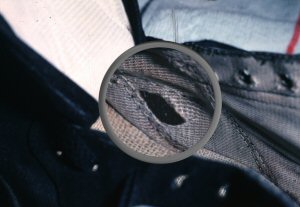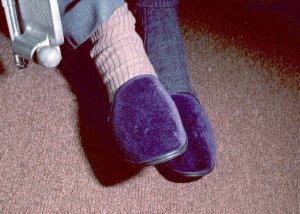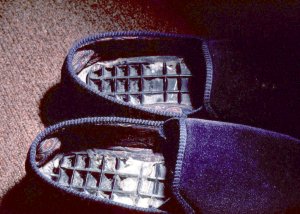Footwear considerations
A lot of foot problems diabetics suffer are due to poor or inappropriate footwear. Here are some examples.
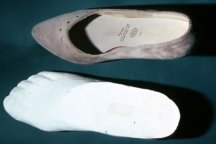
Left is a picture of a typical lady's Court shoe. A plaster cast has been taken of the owner's foot.
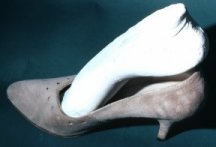
In this second picture you can see that trying to place the plaster cast in the shoe is impossible. Of course, with a real foot the foot can be squashed into the shoe but it is not good for diabetics. Slip-on shoes like these are more likely to cause callous formation and press on the toe nails which may predispose towards in-growing nails.
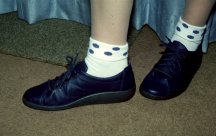
A better shoe is the soft-topped lace up shoe with plenty of room in the toe-box. Lace up shoes have the advantage that they hold the foot more firmly into the heel of the shoe and do not allow the foot to slide about in the shoe the way slip-ons do. There is less likelihood of getting callous and in-growing toenails with lace up shoes.
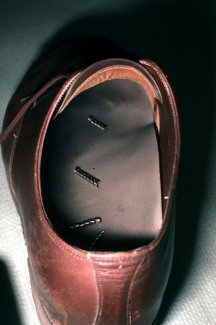
It is always a good idea to get diabetics to check the inside of their shoes every day to see that there are no stones or other sharp objects inside which could injure the foot. In this example, the owner of the shoe works in a machine shop. The pieces of metal swarf seen here are from the metal lathe that he operates in the factory. Imagine what damage they could cause to a foot lacking in sensation!
A few years ago one of our diabetics who suffers from severe neuropathy put a watch in her shoe last thing at night in order to remember to wear it the following morning. In the morning she got up, dressed and went to work wearing her trainers with the watch still in them. It was not until much later that day that she noticed that her ankle was swollen and when she removed the shoe she found the watch and a round hollow in her foot where it had been in her shoe!